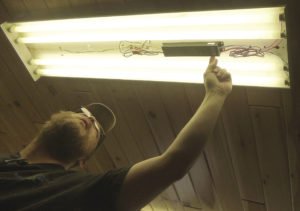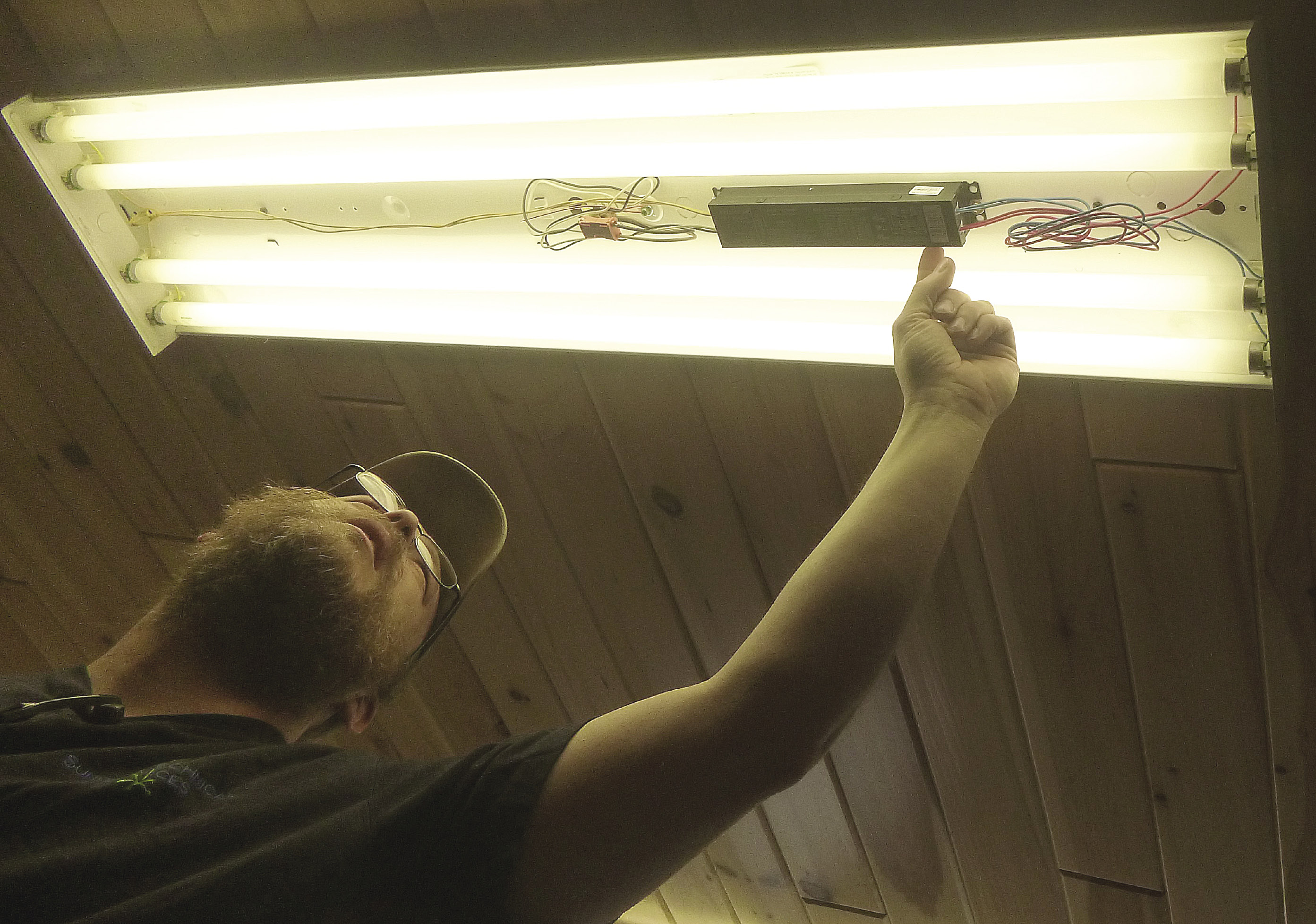Grand Marais—We all know them: the yellow-tinged fluorescent lights embedded into school, church and office ceilings since the 1970s. Until recently, this was the lighting of choice for most public buildings, but a new lighting option is gaining popularity. It looks a lot like the fluorescence of the past, but when it comes to quality, energy efficiency and cost savings, the difference couldn’t be more clear.
Jeremy Ridlbauer, owner of Sundew Technical Services in Grand Marais has two nearly identical lighting fixtures lined up side by side against the wall of his workshop. One is an old-fashioned fluorescent, the other an LED. Characteristically enthusiastic about the inner workings of electrical appliances, Ridlbauer talked about the process of retrofitting all of the lights upstairs at the Grand Marais Pharmacy.
“Basically, I’m just setting up the fixture for the new harness, removing the very hot ballast and then putting the lights in,” he said.

They’ll reuse the rest of the fixture, which is right in step with the conservationist philosophy of the business owners.
Bob Sample, owner of the pharmacy, said that he noticed a difference right away. “It’s cleaner, clearer light. Not as yellowish.”
There is also a difference in temperature between the old bulbs and the new. The LEDs produce an equal amount of light with less energy, so they emit less heat. This keeps the ceiling cooler all year-round, and adds less unwanted heat to the building in the summer, which means less air conditioning. “Less heat, better lighting. A bit of a win-win,” said Sample
Ridlbauer explained that the bulbs come in both glass or polycarbonate versions, and ballasted or non-ballasted versions. The Grand Marais Pharmacy chose the latter for both. Each bulb has a lifetime of 4-5 years depending on usage, with a substantial warranty. In total, each fixture installed will conserve 65 watts, for a total of 2,000 watts saved. Over the course of a year, this will save approximately $900 in electrical usage.
“Ultimately, electric rates keep going up. So why NOT do this,” said Sample.
The pair estimates that the entire switch will cost about $1,500.00. However, this initial cost will be off-set by a rebate from the Grand Marais PUC, which will cover approximately half the cost. And once the lighting system begins to generate savings, the dollars and energy conserved will be 50 percent of their old electric bill. Based on previous electric use, this means that the new lights will pay for themselves in six months to one year.
“It’s all around good to be saving or conserving all of our resources, and this is one facet we can do relatively easily and cost effectively,” said Ridlbauer.
The lighting upgrades at the Grand Marais Pharmacy are just one example of local business owners choosing to incorporate energy efficiency into their business models. To help make the leap from old technologies into new, the Cook County Board recently approved access to the Property Assessed Clean Energy Program (PACE); a loan program made specifically for energy improvements, such as adding new lighting, solar and solar thermal infrastructure to their business or non-profit.
For more information on PACE, visit the Saint Paul Port Authority at www.sppa.com.—Staci Droulliard






